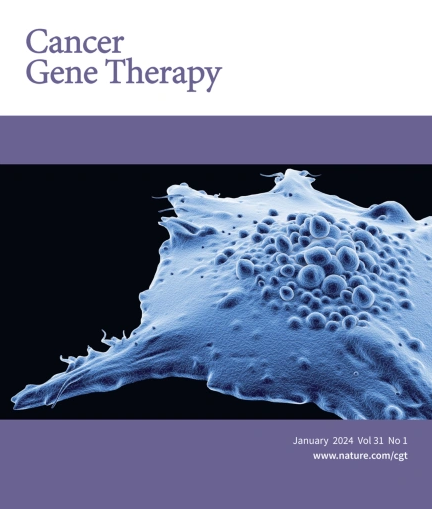PLK1活性的结构调控:对细胞周期功能和药物发现的影响。
IF 5
3区 医学
Q1 BIOTECHNOLOGY & APPLIED MICROBIOLOGY
引用次数: 0
摘要
Polo样激酶1 (PLK1)是有丝分裂的关键调节因子,其过表达通常与癌症的低生存率相关,作为肿瘤药物靶点继续被广泛研究,临床试验评估第二代和第三代抑制剂。除了保守的n端激酶结构域(KD)外,Polo-Like激酶家族的一个独特特征是c端polo-box结构域(PBD)。PBD包含一个磷酸肽结合位点,该位点识别由其他激酶引发的底物,并且负责PLK1的亚细胞定位到细胞核中的特定位点,包括中心体和着丝点。PBD的另一个作用是通过与KD的结构域相互作用来维持PLK1的自抑制状态。对翻译后修饰和PBD - KD结构域关联的深入研究表明,PLK1调控的关键事件包括磷酸化底物结合、T210磷酸化和与Bora蛋白的结合。这些可以诱导开放和活跃的构象,其中域-域抑制相互作用不再占主导地位。最近描述的进一步调控事件包括单体和二聚体形式之间的交换,这也可以在细胞周期中抑制或激活PLK1。PLK1的不同寡聚形式,以PLK2的同二聚体和异二聚体的形式存在,已经被确定并可能发挥环境依赖的作用。本文综述了PLK1抑制的结构和机制以及其激活和调控的时空要求的最新信息。它还涵盖了最近对polo样激酶家族其他成员的构象调节的见解。PLK1构象调节对细胞周期功能和药物发现的影响是重要的,因此我们将详细讨论。本文章由计算机程序翻译,如有差异,请以英文原文为准。

Structural regulation of PLK1 activity: implications for cell cycle function and drug discovery
Polo Like Kinase 1 (PLK1), a key regulator of mitosis whose overexpression is often associated with poor survival rates in cancer, continues to be widely investigated as an oncology drug target with clinical trials evaluating second and third generation inhibitors. In addition to the conserved N-terminal kinase domain (KD), a unique characteristic of the Polo-Like kinase family is the C-terminal polo-box domain (PBD). The PBD contains a phosphopeptide binding site that recognizes substrates primed by other kinases and furthermore is responsible for subcellular localization of PLK1 to specific sites in the nucleus including centrosomes and kinetochores. Another role of the PBD is its regulatory ability through domain-domain interactions with the KD to maintain an autoinhibited state of PLK1. Insights into post translational modifications and the PBD – KD domain-domain association have been obtained and show that key events in PLK1 regulation include phosphosubstrate binding, T210 phosphorylation and engagement with the Bora protein. These can induce an open and active conformation where the domain-domain inhibitory interactions no longer dominate. Further regulatory events recently described include the interchange between monomeric and dimeric forms, which can also serve to inhibit or activate PLK1 during the cell cycle. Different oligomeric forms of PLK1, existing as homodimers and heterodimers with PLK2, have been identified and likely play context dependent roles. This review provides an overview of recent information describing structural and mechanistic insights into inhibition of PLK1 and the temporal and spatial requirements of its activation and regulation. It also covers recent insights into the conformational regulation of other members of the Polo-Like kinase family. The implications of the conformational regulation of PLK1 with respect to cell cycle function and drug discovery are significant and are therefore discussed in detail.
求助全文
通过发布文献求助,成功后即可免费获取论文全文。
去求助
来源期刊

Cancer gene therapy
医学-生物工程与应用微生物
CiteScore
10.20
自引率
0.00%
发文量
150
审稿时长
4-8 weeks
期刊介绍:
Cancer Gene Therapy is the essential gene and cellular therapy resource for cancer researchers and clinicians, keeping readers up to date with the latest developments in gene and cellular therapies for cancer. The journal publishes original laboratory and clinical research papers, case reports and review articles. Publication topics include RNAi approaches, drug resistance, hematopoietic progenitor cell gene transfer, cancer stem cells, cellular therapies, homologous recombination, ribozyme technology, antisense technology, tumor immunotherapy and tumor suppressors, translational research, cancer therapy, gene delivery systems (viral and non-viral), anti-gene therapy (antisense, siRNA & ribozymes), apoptosis; mechanisms and therapies, vaccine development, immunology and immunotherapy, DNA synthesis and repair.
Cancer Gene Therapy publishes the results of laboratory investigations, preclinical studies, and clinical trials in the field of gene transfer/gene therapy and cellular therapies as applied to cancer research. Types of articles published include original research articles; case reports; brief communications; review articles in the main fields of drug resistance/sensitivity, gene therapy, cellular therapy, tumor suppressor and anti-oncogene therapy, cytokine/tumor immunotherapy, etc.; industry perspectives; and letters to the editor.
 求助内容:
求助内容: 应助结果提醒方式:
应助结果提醒方式:


